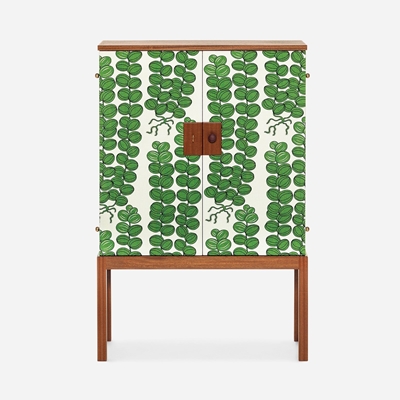Svenskt Tenn’s furniture is made from wood that is varnished or coated. Clean with a soft cloth dampened with mild dish detergent or soapy water. Dry with a soft cloth. Do not expose the furniture to prolonged humidity or direct heat or use polish, oil or abrasive cleaners on the furniture.
Avoid placing vases, books, placemats and the like, on the cabinet top when the furniture is new, as colour variations can occur on the surface. Also avoid exposing the furniture to large changes in temperature and humidity.
Contact a furniture restorer if the coating or wood gets damaged, as it can get worse if not tended to.
















































































